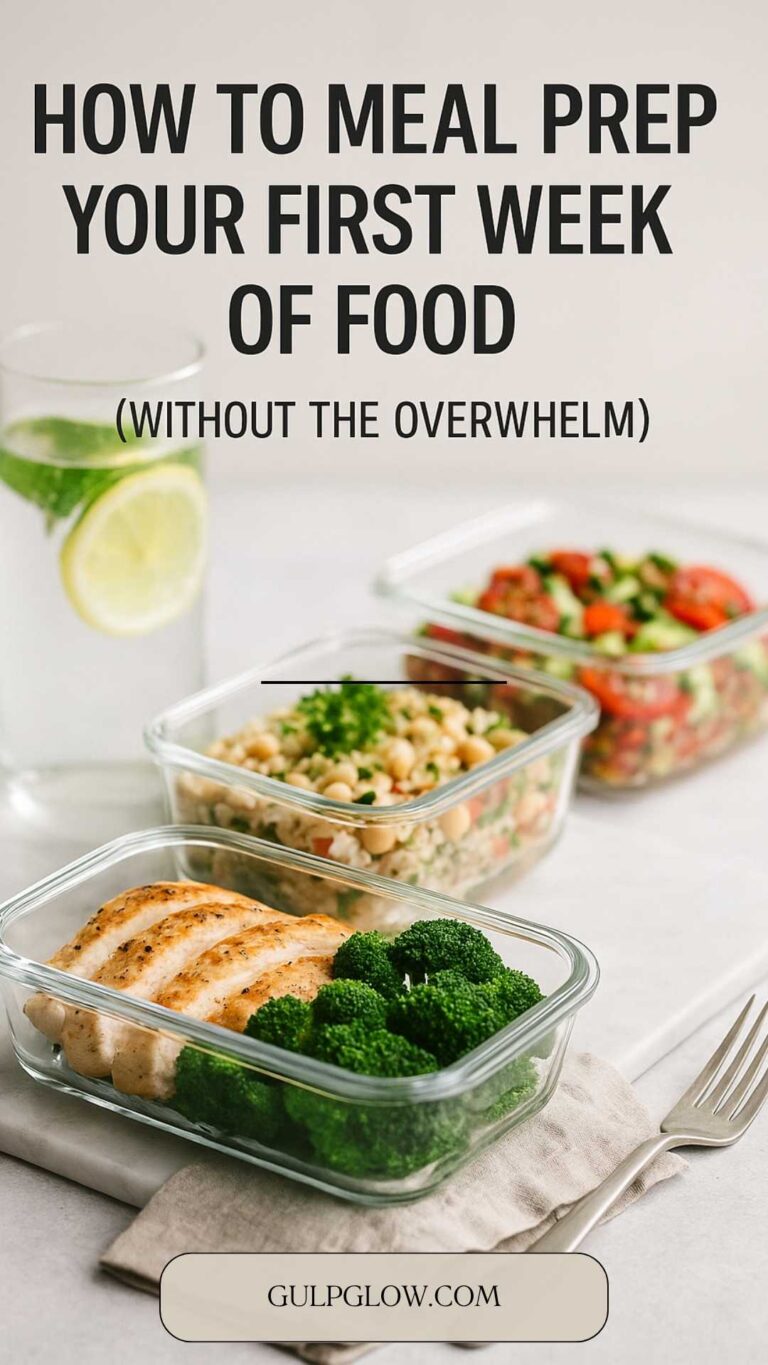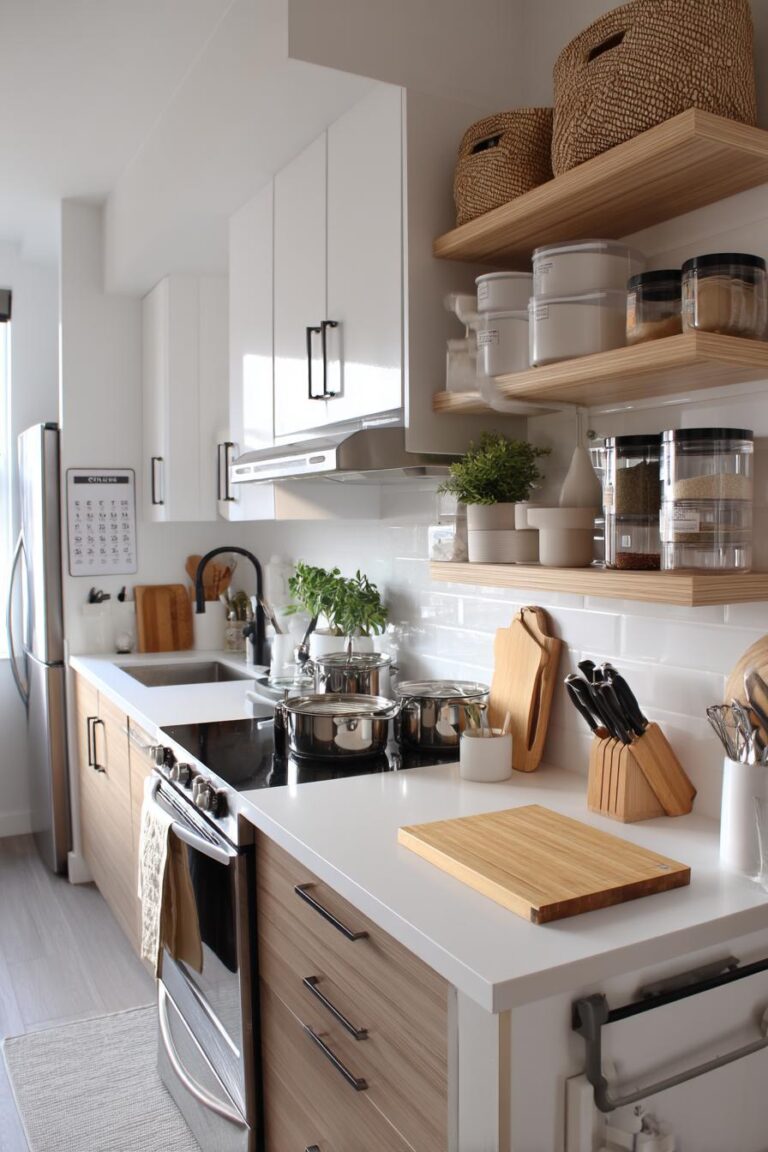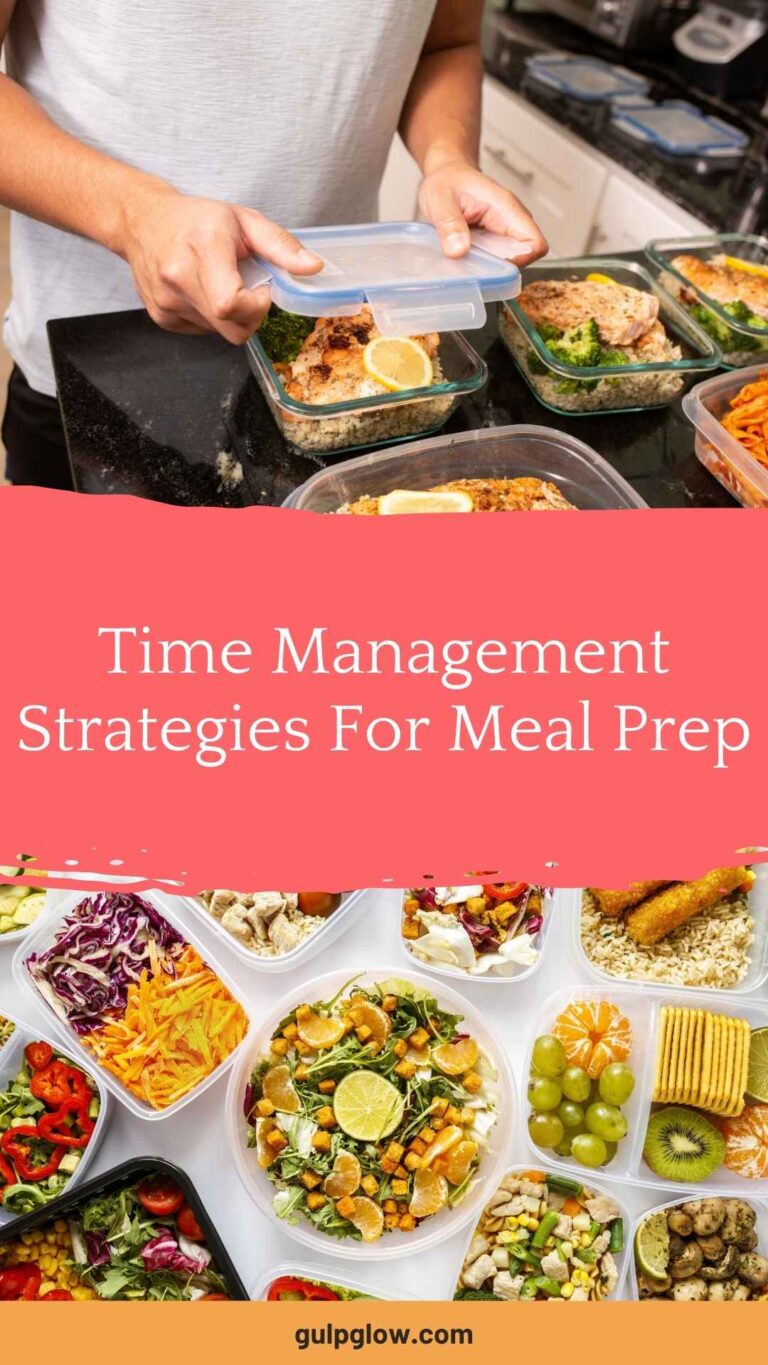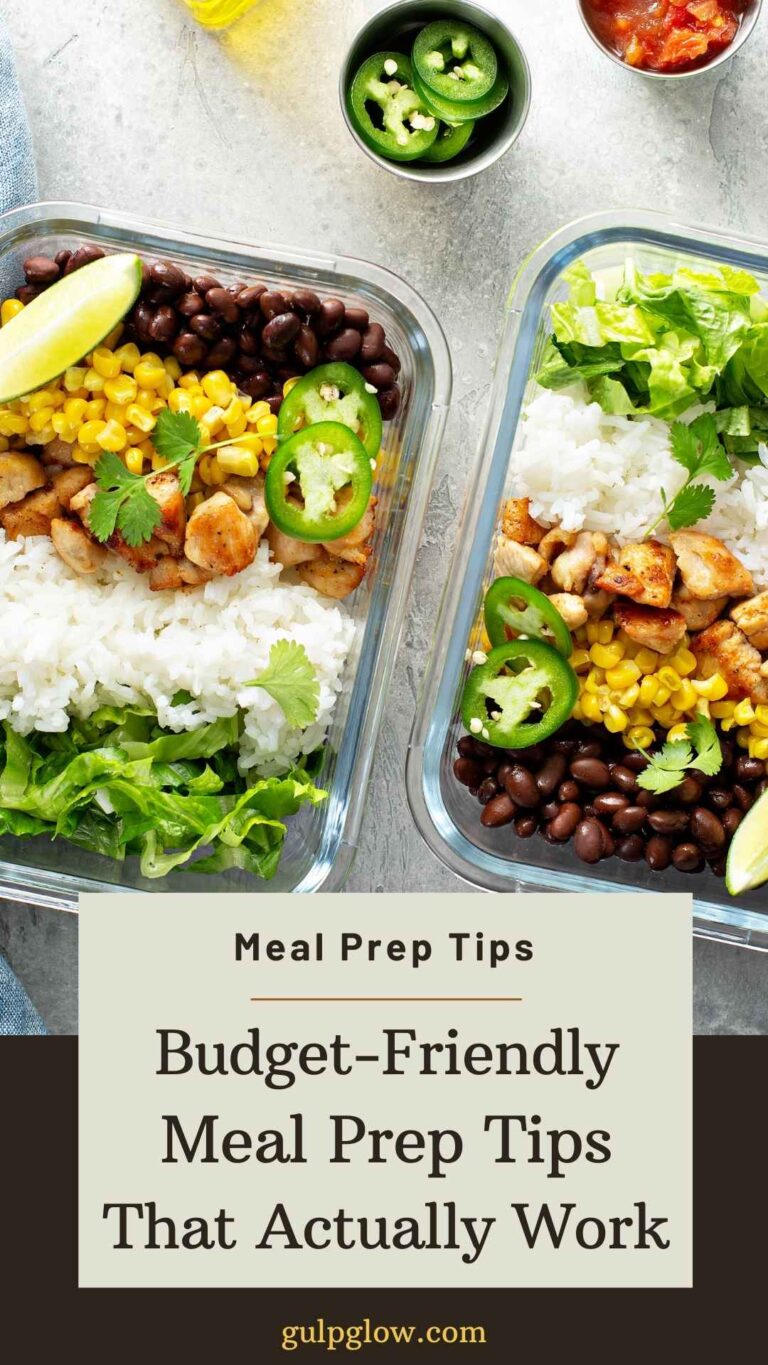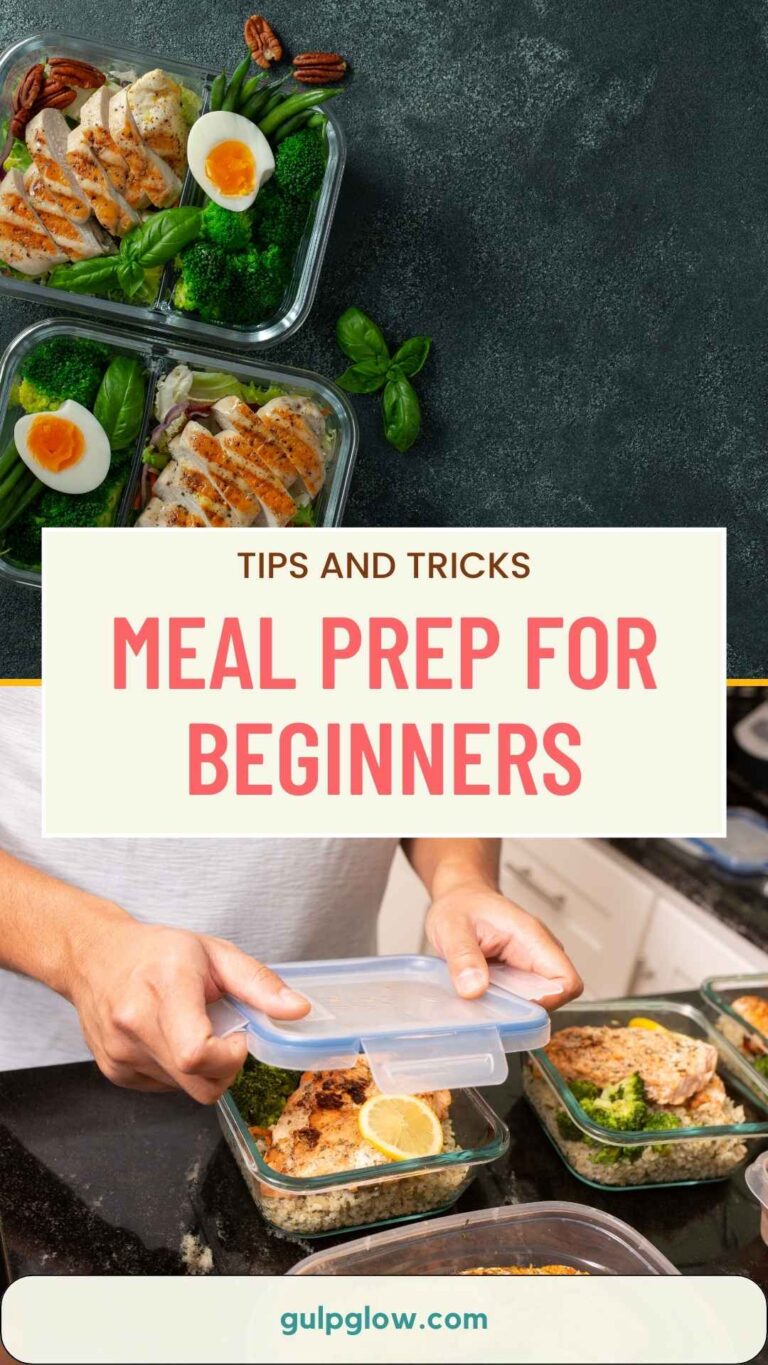Meal Prep for College Students: Quick and Easy Tips
College life can be a whirlwind of classes, social activities, and late-night study sessions, making it tricky to eat healthy. That’s where meal prep comes in. By planning your meals in advance, you can ensure you’re eating nutritious and budget-friendly food without the constant hassle of daily cooking.
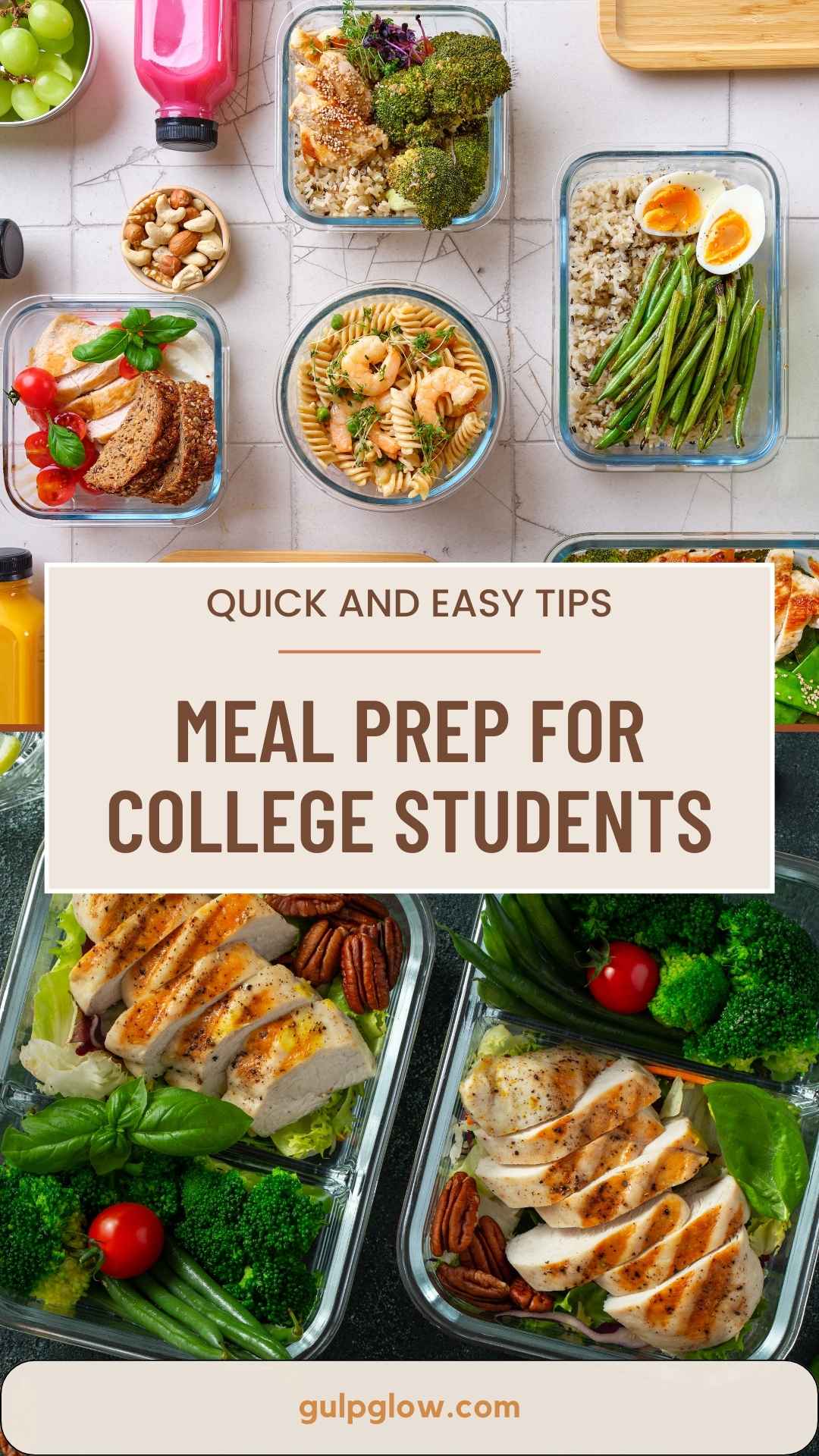
Meal prepping is a great way to take control of your diet while saving both time and money. You can cook simple dishes like beans and rice or try new things like muffin tin omelets and overnight oats. Prepping meals on the weekend means less stress during your busy week.
With just a bit of planning, you can turn meal prep into a helpful habit that keeps you fueled and focused. It might sound like a lot of work at first, but soon it’ll be a regular part of your routine, freeing up your time for other important things. Whether you’re a cooking pro or a beginner, there are plenty of easy recipes to try that fit the college lifestyle.
Benefits of Meal Prep for College Students
Meal prep offers several benefits for college students, such as saving time and money, encouraging healthier eating habits, and improving time-management skills. Preparing meals in advance can significantly enhance a student’s college experience, allowing them to focus more on their studies and personal well-being.
Saves Time and Money
By preparing meals ahead of time, you can cut down on the time spent cooking every day. Imagine freeing up extra hours in your busy schedule! Meal prep lets you make several meals in one go, which is super handy when you’re juggling classes and assignments.
Saving money is another big plus. Buying ingredients in bulk is often cheaper than getting individual meals at the cafeteria or eating out. Plus, when you make your own food, you control the budget and adjust if needed. This way, you won’t find yourself short on cash by the end of the month.
Healthier Eating Habits
When you take charge of your meals, healthier choices become easier. Preparing your food allows you to select nutritious ingredients and avoid unhealthy options like processed foods. You can create a balanced meal plan with plenty of fruits, vegetables, lean proteins, and whole grains.
Knowing what goes into your meals helps you keep track of calories and nutrients, supporting a healthier lifestyle. Plus, having prepped meals minimizes the temptation to opt for fast food or vending machine snacks when you’re in a hurry.
Enhancing Time-Management Skills
Meal prepping boosts your time-management skills by teaching you how to plan and organize efficiently. Setting aside a specific time each week for meal prep helps you routinely plan your grocery trips and cooking sessions. This structured approach not only means fewer rushed meal decisions but also frees up time for other important tasks.
By managing your meals in advance, you’ll learn to balance academic work with personal routines better. These time-management skills will not only aid you in college but will be valuable well beyond graduation.
Getting Started with Meal Planning

Starting with meal planning can save time, money, and stress, especially for college students. By focusing on your dietary needs, creating a flexible meal plan, and shopping smartly, you can eat healthier without spending a fortune.
Assessing Your Dietary Needs
Before diving into meal prep, identify your dietary requirements. You might be vegetarian, vegan, or have specific allergies. Knowing these needs will guide your meal planning.
Consider your daily schedule. If you’re frequently on the run, snack-sized meals may be ideal. Knowing your caloric intake and nutritional needs is important, too. Resources like online calculators can help estimate this.
Once you know what you need, you can create meals that suit your tastes and lifestyle. Make note of your favorite foods and explore how they fit into a well-rounded diet.
Creating a Meal Plan
Begin by selecting simple, versatile recipes. Think of meals you enjoy and can easily make. Break down the plan by meals, like breakfast, lunch, and dinner. For example:
- Breakfast: Overnight oats or yogurt parfaits
- Lunch: Sandwiches or salads
- Dinner: Stir-fry or pasta
Aim to include a balance of proteins, carbohydrates, and vegetables. Write down your plan and consider flexibility for unexpected changes. Planning a variety keeps meals exciting and reduces fatigue from eating the same foods daily.
Grocery Shopping Tips
When heading to the grocery store, make a list based on your meal plan. This keeps you focused, saving time and money. Buying in bulk can be cost-effective, especially for staples like rice, pasta, and frozen veggies.
Compare prices to find the best deals. Check for sales and consider using store loyalty cards for discounts. Bring your own bags to reduce waste and avoid any extra bag fees.
Organize your list by sections, such as produce, dairy, and grains, to streamline your shopping. This helps prevent buying unnecessary items and keeps your budget under control.
Essential Tools and Equipment
When it comes to meal prep in college, having the right tools can make your life so much easier. From smart container choices to handy appliances like a rice cooker, you’ll save time and stay organized and eat better.

Choosing the Right Containers
Picking the best containers is key for successful meal prep. Choose containers that are microwave-safe, freezer-safe, and easy to clean. Glass Lock containers are great because they’re durable and don’t stain. Stackable containers can save a lot of space in a small dorm room.
Bento boxes can keep snacks or small meals sorted throughout the day. It’s a good idea to have a mix of sizes to fit different meals.
Clear containers let you see what’s inside and are perfect for keeping track of what meals are left. Labeled containers help you stay organized, especially if you’re prepping for several days at once.
Investing in a Rice Cooker
A rice cooker can be a lifesaver! It’s not just for rice; you can also use it for quinoa, oats, and even steaming veggies. Rice cookers are easy to use because all you do is add water and grains, then press a button.
They’re compact, so they won’t take up much room, and they can save tons of time on busy nights. If you pick one with a “keep warm” setting, it keeps your food ready even if you’re running late.
Having a rice cooker means you can always quickly whip up a base for your meals without hassle. With these little machines, your meal prep becomes a breeze, and you might find yourself eating something better than ramen noodles more often.
Basic Cooking Utensils
Your cooking game will benefit from a few basic utensils. You’ll want a plastic or silicone spatula, some measuring cups and spoons, and a can opener. Tongs are great for grabbing hot items, and a cheese grater is useful for toppings or quick snacks.
Don’t forget a good knife and cutting board. Basic utensils like a veggie peeler and serving spoon make meal prep straightforward. Since space is tight, opt for things that can do double duty, like a utensil with a spoon on one side and a fork on the other.
Quality utensils can help you make quick work of prepping your meals and can pack into a small drawer. If you have the right tools, you’re more likely to stick with your meal plan, keeping your nutrition and budget on track.
Simple and Nutritious Recipes
Eating well at college doesn’t have to be complicated or costly. By preparing meals in advance, you save time and ensure you’re eating healthy. Here are some easy recipes that you can whip together quickly.
Overnight Oats for Breakfast
Start your day with a nutritious bowl of overnight oats. Simply mix rolled oats with milk or a milk alternative, like almond or soy milk. Add a spoonful of yogurt to make it creamy. For sweetness, try honey or maple syrup. Add fruits such as bananas, berries, or apples to boost flavor and nutrients.
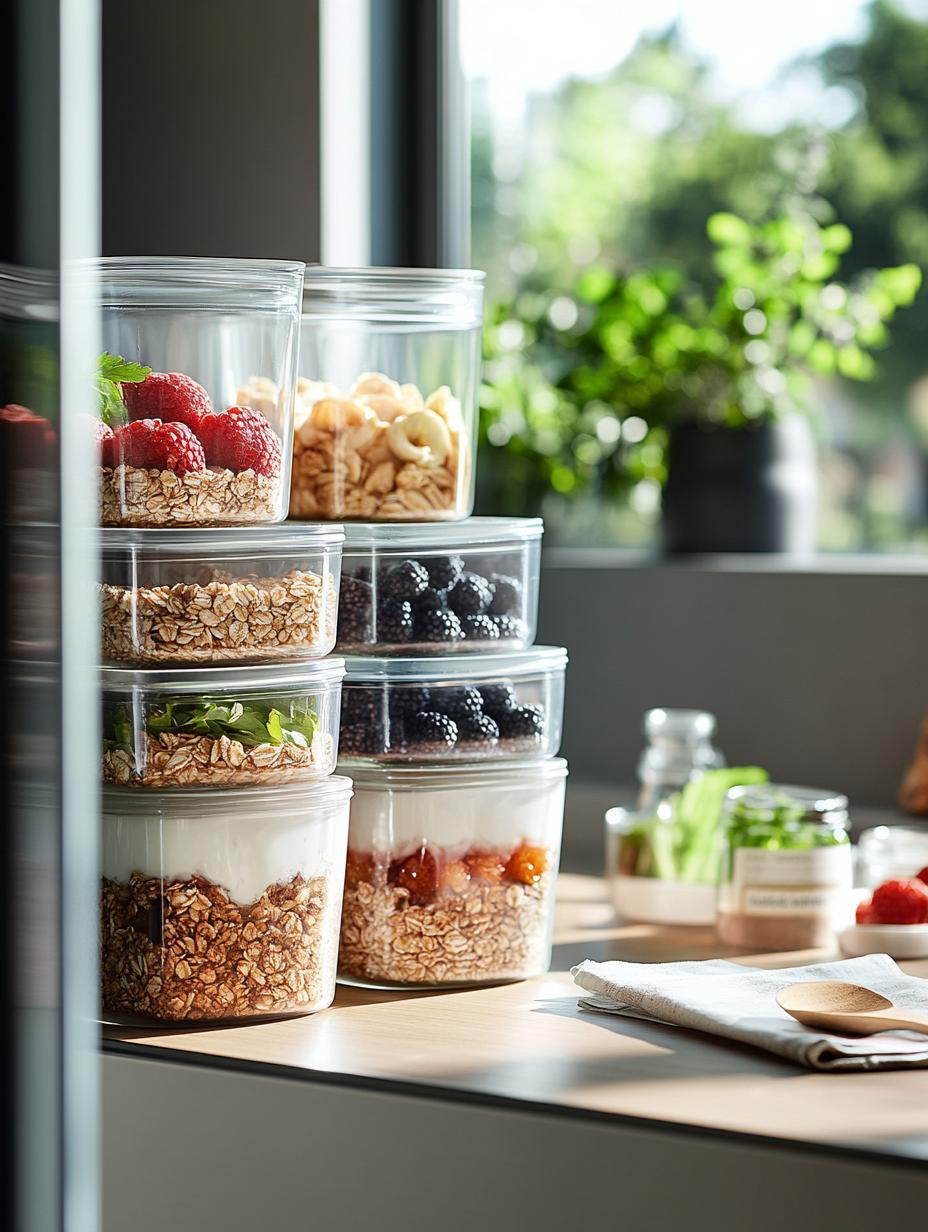
Nuts or seeds like almonds, chia, or flax add a delightful crunch. Prepare it the night before and let it sit in the fridge. In the morning, just give it a stir and enjoy. Overnight oats are easy, nutritious, and can be customized to your taste.
Easy Chicken Pot Pie
A comforting meal, chicken pot pie is surprisingly simple to make. You need cooked chicken, which can be leftover or rotisserie from the store. Mix it with a combination of vegetables like peas, carrots, and potatoes. Use frozen veggies for convenience. Add cream of chicken soup to bring everything together.
For the crust, store-bought pie dough works well. Follow these steps: Place the dough in a pie dish, fill with your mixture, and cover with another layer of dough. Bake it in the oven at 375°F for about 30 minutes until golden brown. This dish is hearty and perfect for sharing.
Vegetable Stir-Fry with Rice
Vegetable stir-fry is a quick and healthy meal packed with flavor. Start by chopping your favorite vegetables such as bell peppers, broccoli, and carrots. Sauté them in a bit of oil in a large pan. Add garlic and soy sauce for taste. Toss in some tofu or cooked chicken for protein.
Prepare rice on the side; brown rice increases the nutritional content. Once the veggies are tender, combine with rice, and mix all together. It’s ready in just about 20 minutes. This dish is adaptable, allowing you to use whatever vegetables and protein you have on hand.
Strategies for Meal Prepping on a Budget

Meal prepping in college can save you time and money. By planning ahead, using simple strategies, and making wise choices, you can enjoy fresh meals without spending a lot. Below, you’ll find practical tips on making the most of what you have, shopping smart, and choosing the right produce.
Buying in Bulk
Buying in bulk can save you a lot of money on groceries. Stores often offer discounts on larger quantities, especially for staples like rice, pasta, and beans. If storage is an issue, consider splitting these with friends or roommates. Before shopping, make a list of items you use often. This helps avoid buying things you don’t need.
Stocking up on spices and herbs can add variety to meals without costing much. Keep your kitchen organized to find what you need easily. Look out for sales on bulk items at your local supermarket or online. Non-perishable foods are excellent for bulk purchases, as they have a long shelf life.
Utilizing Leftovers
Turning leftovers into a new meal is a great way to minimize waste and save money. Plan meals that share ingredients, making it easy to reuse what’s left. For example, roast chicken could become a chicken salad or be added to a wrap the next day. Creativity is key here.
Store leftovers properly in airtight containers to preserve freshness. Label them with dates, so you know when to eat them by. This not only saves money but also time, as you have ready-made meals at your fingertips. If cooked creatively, leftovers don’t have to feel old or repetitive.
Seasonal Fruit and Vegetable Selection
Seasonal fruits and vegetables are often cheaper and taste fresher than out-of-season produce. They’re packed with nutrients and can be found at farmers’ markets in your area. Research what’s in season at different times of the year and adjust your meal plans accordingly.
When you buy in-season produce, you’re not only saving money but also supporting local farmers. Getting creative with recipes can help you make the most of seasonal offerings. Preserving or freezing fruits and veggies can extend their usability, giving you cheap, nutritious options year-round.
Storing and Reheating Your Meals Safely
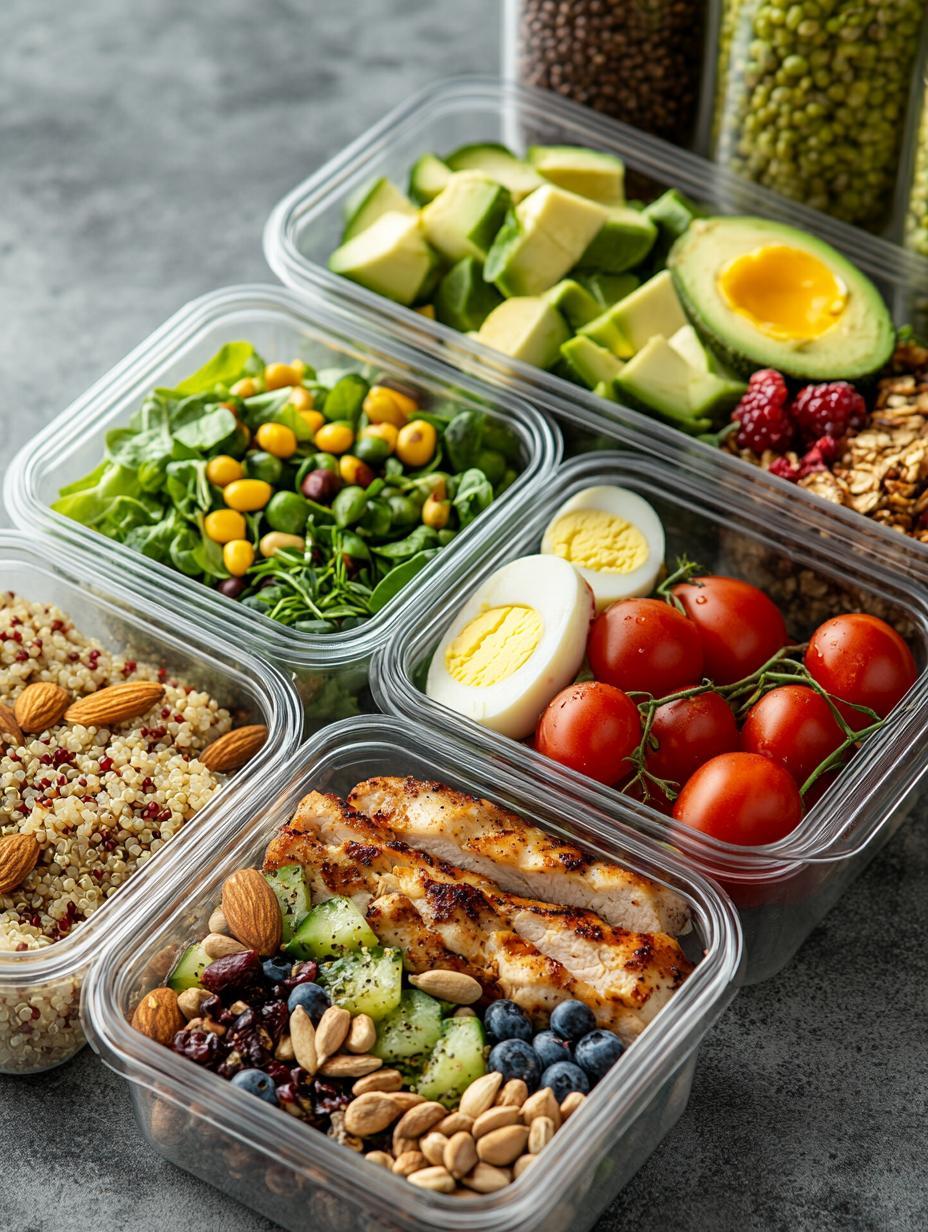
Keeping your meals fresh and reheating them properly is key to enjoying delicious food throughout the week. Temperature control is crucial to ensure food safety.
Best Practices for Food Storage
When storing your prepped meals, make sure your refrigerator is between 35°F and 40°F (2°C and 5°C). This temperature range keeps bacteria from growing. Place meals towards the back of the fridge where it’s coldest. Use airtight containers to maintain freshness and prevent odors from mixing.
Label each container with the date it was made to help you keep track of when you need to eat them. Typically, most meals are good for 3-4 days in the fridge. If you won’t eat them within that time, stick them in the freezer.
Using the right containers is important too. Look for reusable ones that are BPA-free and microwave safe. These will help in reheating and are better for the environment.
Tips for Reheating
When it’s time to reheat your meals, do so properly to avoid cold spots where bacteria can thrive. Use a microwave, oven, or stove to heat your food evenly. Stir dishes halfway through reheating to ensure even warming.
For meals in the microwave, use microwave-safe lids or covers to lock in moisture and heat evenly. Set the microwave at medium heat and check the temperature. The safest approach is heating until the food is at least 165°F (73°C).
If you’re reheating from frozen, let meals thaw overnight in the fridge when possible. This ensures they heat more evenly. If you’re short on time, use the microwave’s defrost setting for a quick start.
Remember to always check your food’s temperature before eating. A food thermometer can help ensure dishes are safely reheated and ready to enjoy.
Balancing Social Life and Meal Prepping
Meal prepping can help you stay healthy and save time, but it’s important to make sure you don’t miss out on social activities with friends. You can integrate meal prep into your social schedule in creative and enjoyable ways.
Cooking with Friends
Cooking with friends is a fun way to balance social time and meal prep. Organize a weekly cooking session where everyone brings their own ingredients. You can share recipes and help each other prep meals for the week.
Another option is to have a themed cooking night. Choose a cuisine like Italian or Mexican and plan to make dishes that fit the theme. This not only makes meal prepping exciting, but it also encourages trying new recipes.
After cooking, you can enjoy the meal together. This makes the experience feel like a mini celebration. Preparing meals with friends can also lead to new friendships as you bond over shared cooking experiences.
Prepping for Special Occasions
Special occasions like parties or school events can make it hard to stick to a meal prep routine. Plan ahead by prepping dishes that can be easily adapted for gatherings. Finger foods like wraps or skewers can work well for such events.
Consider using an app to track meals and events. This helps you stay organized and ensures you have meals ready even when schedules get packed. It’s okay to treat yourself on special occasions, but having a plan helps you balance indulgence with your usual meal prep.
Invite friends to special meal prep sessions before big events. This not only helps with cooking but also makes sure you’re socializing while staying on top of your food plans.

